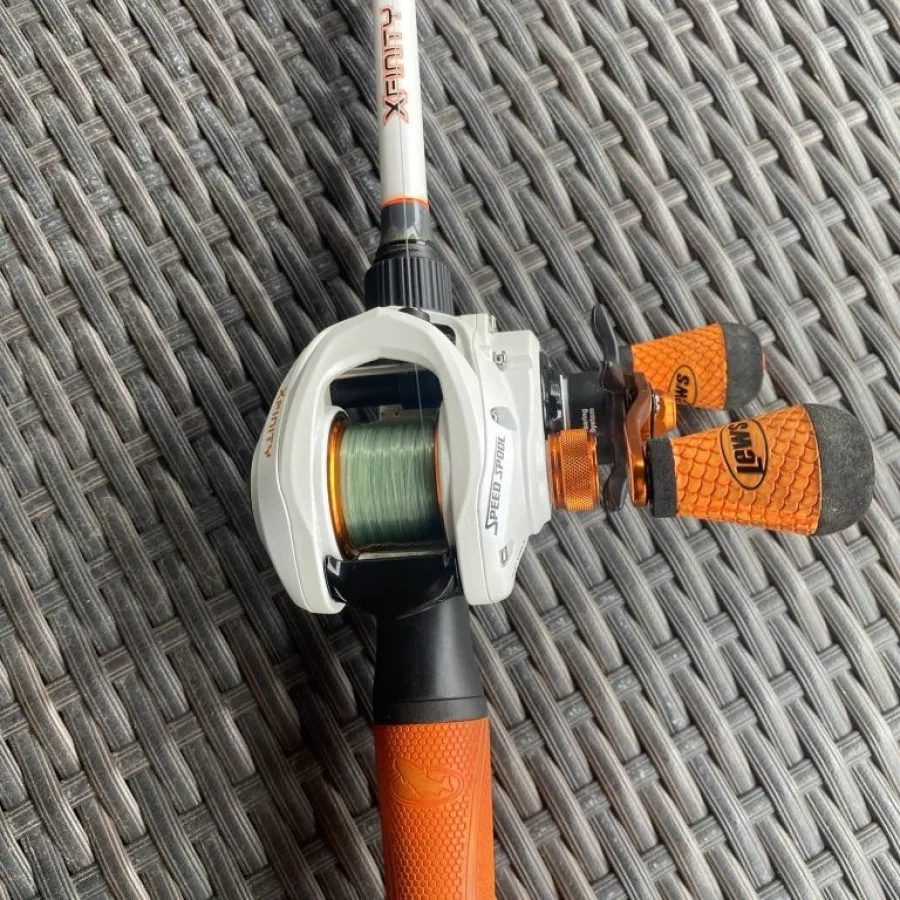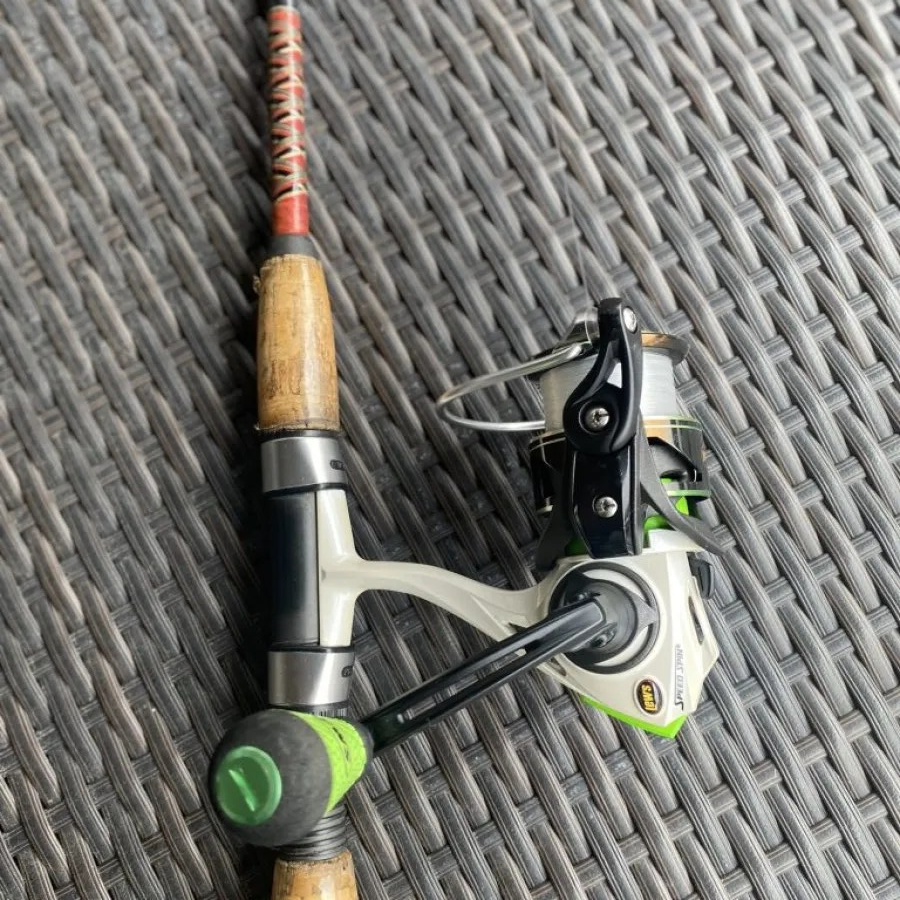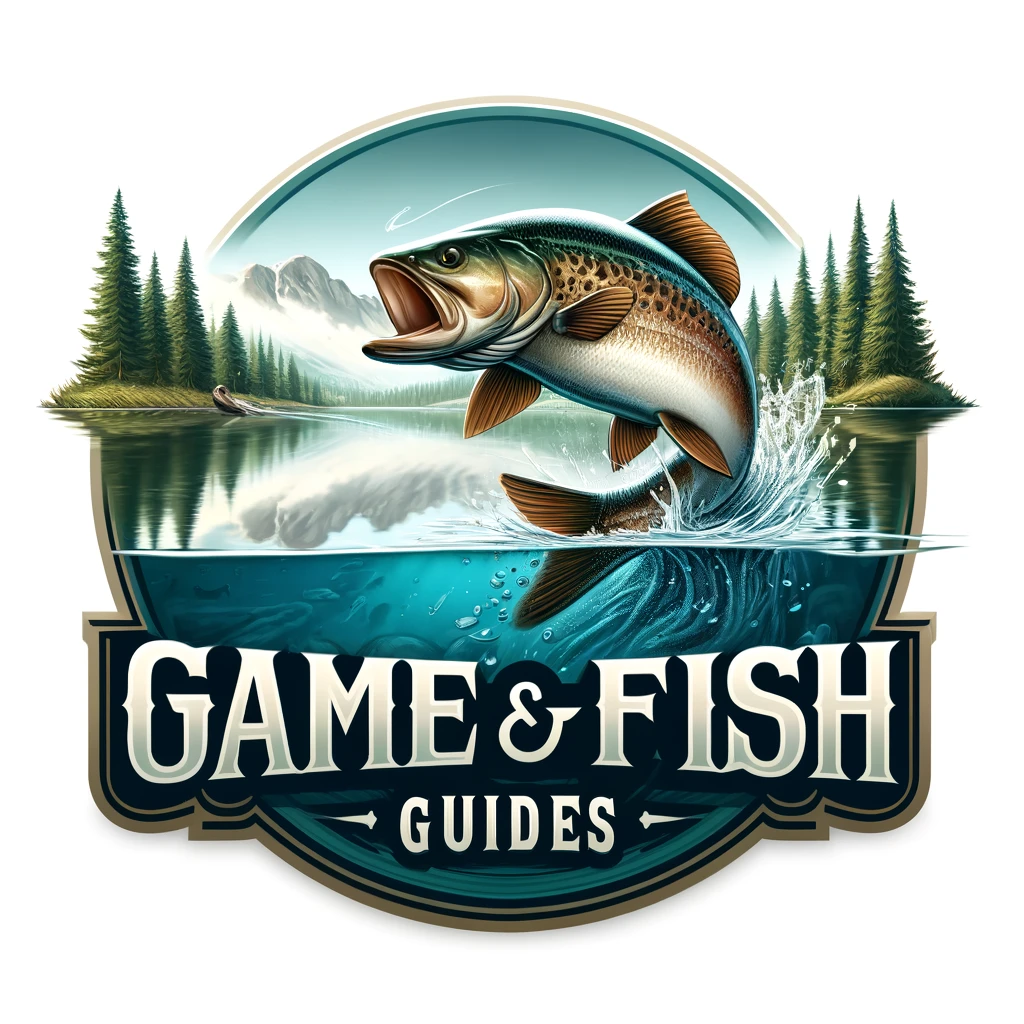When it comes to fishing tackle, the debate between a baitcaster vs a spinning reel is a classic one, and ultimately it comes down to personal preferences and technical differences. I’ve used both types of reels extensively, and each has its strong suits. This is why I’ve always owned and always will own several of both types.
This article will identify the pros and cons of both baitcasters vs spinning reels, and provide guidance into when you should use them. Our goal is to arm you with enough information to choose the right reel for you.
What is a Baitcasting reel
A baitcasting reel attaches to the top of a baitcasting rod, and the spool spins when you turn the handle. This allows for precise lure casting due to its smooth and high-speed spool rotation. Baitcaster reels are popular among experienced anglers and tournament anglers because of their precision and ability to handle heavier lures and heavier lines.
For example, a baitcaster reel can be adjusted to use a heavier line and lure, or a lighter line and lure. Spinning gear does not have the capability, which we will talk about shortly.

Pros of Baitcasting Reels
Long Distance Casting: The design of a baitcaster spool allows you to cast long distances, which is critical for covering more water and reaching your intended target.
Casting Accuracy: Baitcasting gear provides better control, allowing for pinpoint accuracy, which is important for fishing in areas with heavy cover or shallow cover.
Heavier Lures and Lines: Baitcasters can handle heavy lures and lines, which is good for large fish and crankbaits.
Durability and Line Capacity: Generally baitcasters are more durable, they also have a large line capacity, especially in bigger models. This is great for versatility.
Gear Ratios and Fast Retrieves: With normally higher gear ratios, baitcasters are great for techniques that require fast retrieves. You can also find these with a lower gear ratio if this is needed. For example, if you’re using deep-diving crankbaits.
Cons of Baitcaster Reels:
Learning Curve: They are notoriously difficult for beginners because you need to use your thumb to prevent a bird’s nest or backlash.
Spool Tension Adjustment: Adjusting the spool tension knob for a different line size or lure weight can be a bit challenging to learn.
Cost: Generally, baitcasters are more expensive than spinning reels.
Limited Use with Lighter Tackle: They can be difficult to use with very light lures because the tension simply doesn’t go low enough, making them not quite as useful for ultralight fishing as spinning tackle is used for.
Spinning Reels: A Closer Look
The reel attaches to the reel seat on the bottom of a spinning rod. The spinning reel spool itself doesn’t rotate, but a rotating bail arm is what wraps and controls your line. This design is much more user-friendly, especially for beginners who don’t know how to cast well.
These are super versatile, and you can use light braided line with light baits, which makes them the best choice for ultralight fishing.

Spinning Reel Pros:
Ease of Use: They are extremely easy to use, therefore, they are a great choice for beginner anglers or even just inexperienced anglers. The drag system is also very easy to operate.
Flexibility with Light Lures: With an easy casting style that has low resistance, this type of reel excels at light finesse fishing using light bait.
No Backlash: The fixed spool makes them easier to cast and eliminates the chance of backlashes, which are very frustrating to deal with.
Versatility: They can be used in a wide range of styles and with different line types.
Maintenance: They are easier to maintain and clean, plus they are usually more affordable than baitcasting reels.
Cons of Spinning Reels:
Lower Casting Distance and Accuracy: While they work well in many circumstances, they don’t cast quite as far and they are not as accurate and adjustable as baticasters.
Weight: They are usually heavier than baitcasters that are similar in size and capacity.
Line Twist: They are known to have a weakness for line twists, which is when a monofilament line becomes twisted.
Baitcasters versus Spinning Reels: Head-to-Head Comparison
Now that we’ve talked about the individual strengths and weaknesses of both reel types, let’s compare them in certain scenarios:
Bass Fishing: Baitcasters are usually the preferred reel to fish for bass. However, spinning reels can be perfect for finesse fishing with light line and light bait.
Ease of Use: Spinning reels are undeniably easier for beginners to fish with. They have a simpler learning curve and less risk of line tangles and spool backlashes.
Lure and Line Versatility: While bait casters are better for heavy lures and heavy lines, a spinning setup excels with lighter braids and lighter baits.
Casting Control: Baitcasters give you more control over line oscillation and spool spin speed, which is important for customization according to the lure weight. This allows for precision casts like targeting bass in shallow cover where you don’t want to over-cast into a tree.
comparing and contrasting baitcasters and spinning reels
In the end, the choice between a baitcaster and a spinning reel comes down to your specific needs, skill level, and personal preference. If you’re targeting large fish using heavy lures, or you need to cast very accurately, a bait caster might be the best choice for you.
However, for most anglers who are new to fishing or those who are looking for an ultralight finesse setup, a spinning reel is the more appropriate option.
Remember, the best reel for you is the one that meets your specific needs and lets you enjoy your time on the water.
FAQs:
Can I use a baitcaster for light lure fishing? While it’s possible, baitcasters are less efficient with light lures compared to spinning reels because the spoon spin typically requires more resistance to cast.
Is a spinning reel good for beginners? Yes, because they are extremely easy to use, they’re a great choice for beginners.
Can I use a spinning reel for bass fishing? Absolutely, these are a good option for bass fishing, especially if you’re using finesse techniques and lighter baits.
How do I choose between a baitcaster and a spinning reel? Base your choice on your target fish, lures you intend to use, fishing technique, and of course your skill level. Baitcasters are great for customization and accuracy as well as heavier lines while spinning reels are easier to use and have the ability to throw lighter lures.

